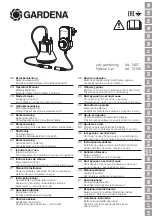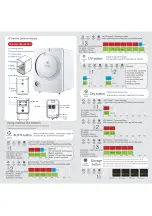
36
Chapter 2
P/N 130859-US, Manual Revision: AA
Haemonetics
®
Cell Saver
®
Elite
®
+ User Manual
Suction Pad
Figure 8, Example of the
Suction
pad
Alert: The recommended intraoperative suction setting is 200 mmHg (27
kPa; 267 mbar) or less. Maintain suction levels as low as possible to
reduce RBC damage as the shed blood travels through the suction tip to
the reservoir. Higher suction levels increase the amount of RBC
hemolysis but may be desired in the event of excessive blood loss when
the need to clear the field is greater than the need to prevent hemolysis.
The
Suction
pad allows you to choose between the following suction types:
SmartSuction:
Autoregulates suction levels to optimize fluid removal.
The vacuum level is kept low when the device detects a high air-flow rate
at the suction tip, indicating surface skimming. The vacuum level
automatically increases when the device detects lower air-flow rates,
indicating submergence in fluid.
Note: Efficient operation of the SmartSuction technology depends on the use
of a high air-flow disposable vacuum line and aspiration and anticoagulant
(A&A) line in conjunction with a reservoir that has a maximum capacity of 3
liters.
The Cell Saver Elite+ device has been calibrated to optimize SmartSuction
performance with the use of Haemonetics proprietary disposable sets and
recommended suction tips. Suction and fluid removal performance may
decline if incorrect or non-Haemonetics disposable components are used with
the system.
Manual:
Allows you to manually set the suction level between 50 and
250 mmHg in 10 mmHg increments.
Post-Op:
Provides a variable suction level with a default level of 75
mmHg. You may set the suction to 25 mmHg, 50 mmHg,
75 mmHg, 100 mmHg, or Off.
Post-op suction utilizes periodic suction relief. Suction runs at the
selected suction level for 10 minutes, turns off for 1 minute, and then
returns to the selected suction level for another 10 minutes. This cycle
repeats continuously throughout post-op operation.
















































